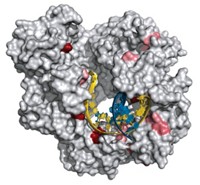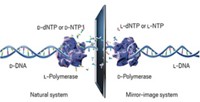Advertisement
Grab your lab coat. Let's get started
Welcome!
Welcome!
Create an account below to get 6 C&EN articles per month, receive newsletters and more - all free.
It seems this is your first time logging in online. Please enter the following information to continue.
As an ACS member you automatically get access to this site. All we need is few more details to create your reading experience.
Not you? Sign in with a different account.
Not you? Sign in with a different account.
ERROR 1
ERROR 1
ERROR 2
ERROR 2
ERROR 2
ERROR 2
ERROR 2
Password and Confirm password must match.
If you have an ACS member number, please enter it here so we can link this account to your membership. (optional)
ERROR 2
ACS values your privacy. By submitting your information, you are gaining access to C&EN and subscribing to our weekly newsletter. We use the information you provide to make your reading experience better, and we will never sell your data to third party members.
Biological Chemistry
Self-Making Ribozyme Pairs Get Competitive
Self-replicating RNA enzymes may offer insights into the origin of life
by Carmen Drahl
January 12, 2009
| A version of this story appeared in
Volume 87, Issue 2
Inspired by the notion that RNA might have been the original chemical machinery of life, researchers have generated an RNA-based system that can replicate itself in a test tube (Science, DOI: 10.1126/science.1167856). The system consists of two RNA enzymes, or ribozymes, that build each other by joining two oligonucleotide building blocks. Previous incarnations of this synthetic system weren't efficient because the enzymes were too slow and the building blocks associated too tightly with each other to allow many rounds of replication. To overcome these limitations, Scripps Research Institute's Tracey A. Lincoln and Gerald F. Joyce used an in vitro evolution screening process to identify a pair of ribozymes that can replicate indefinitely—as long as they're supplied with building blocks. To illustrate their ribozymes' potential as a model genetic system, Lincoln and Joyce made 12 variations of the original pair and allowed them to compete for a common pool of building blocks. Hybrid pairings eventually emerged, and a few of these pairings came to dominate the population, resembling processes that may have occurred when life first evolved.




Join the conversation
Contact the reporter
Submit a Letter to the Editor for publication
Engage with us on Twitter